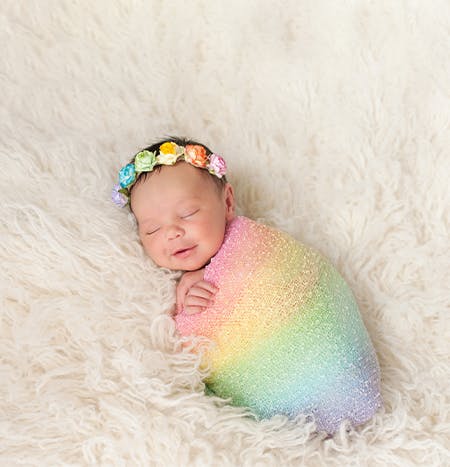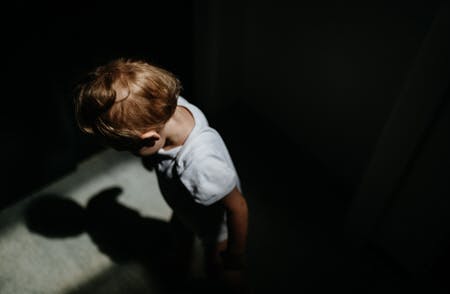Ready to unleash your superpower? Create the life you want and deserve!

Rainbows and Replacements
What are you even saying?

Replacement children, rainbow babies, and subsequent children (a.k.a. subsequent siblings) are all terms to describe the same thing: children born or adopted after the death of a brother or sister.
Why are you talking about it?
I have intimate experience growing up in a family impacted by infant loss. I am well acquainted with the unfinished business of grief.
My family lost a nine-day-old baby boy, and I came along to replace the hole that his death ripped through my parents’ lives. It may seem I use the word “replace” flippantly, but this was the actual word my parents communicated to me when they rarely referred to my dead brother and my subsequent existence. Although I wasn’t even a thought in their minds yet, this tragedy and the subsequent repression (denial) of family grief have colored my entire life.
They still look at me cross-eyed when I mention my experience (so I don’t talk about it with them) or tell me to get over it (still!). I have learned that I share many of the same characteristics as others who had a similar experience and found healing and transformation in the community.
(Shameless plug: my story, along with the stories of many others, is included in the book, Replacement Children: The Unconscious Script.)
Replacement children are a thing!
Surprisingly, replacement children are a common outcome of perinatal loss. In 1964, Cain & Cain, married psychologists, studied the psychological impact on “replacement children” – those born into a family constellation already suffering the intense anguish over a tragically departed child and/or sibling.
The circumstances of death didn’t matter. What mattered was that a child died, and the “parents’ specific intention was to have (another) child as a replacement or substitute for their child who died.” (Cain & Cain, “On Replacing a Child,” 1964)
More surprisingly, one-in-four pregnancies end in miscarriage, which means roughly 25% of the population grapples with grief over losing a pregnancy. In 2008, a book introduced the term “rainbow baby” to a collection of stories about women who decided to interrupt and terminate a much-wanted and often much-planned pregnancy due to medical reasons. The child that followed that gut-wrenching decision received the name “rainbow baby.”
So hopeful was the term “rainbow baby” that it resonated and grew to include children lost to miscarriage, ectopic pregnancy, stillbirth, and death in infancy. This symbolic term pertains to these precious newborns because a rainbow typically follows a storm, giving us hope for what’s to come.
Few people have heard of this condition (replacement children or rainbow babies), and even fewer understand the psychological impact of being born into a family after such a tumultuous and tragic loss.
Grief is complicated.

As lovely as this rainbow term sounds, especially against the icy backdrop of replacing and substituting for a dead child, the name minimizes the psychological impact on the subsequent experience. Simultaneously, the unconscious burden inherited by a rainbow baby or replacement child can be oppressive.
There is pressure and expectation, even if the family says otherwise, inherent in filling a vacancy left by another person. The subsequent child occupies a particularly unique position in the family and has an isolating experience, different from the others, within the same system. The repercussions can extend beyond the immediate period of grief.
There is no natural substitute for loss.
Remember when your favorite teacher was out sick? The substitute teacher, no matter how lovely, couldn’t measure up. You wanted your teacher but would settle in the short term.
Alternatively, if the sub was prickly and you had difficulty getting along, it became easy to blow off the person and the class responsibilities for the day. Why bother investing in this substitute if you don’t understand anything? Better to wait until your real teacher returns to get any real learning done.
Although grossly generalized, this is a similar dynamic and burden for a replacement or substitute child.
Here are a few stories about rainbows replacements

Thanks to the Internet and social media, global expanses are within reach simply by clicking a button. Now more than ever, it is easier to locate others with personal stories similar to yours. You can find thousands of stories online about replacements and rainbows, most accompanied with the hashtag #rainbowbaby.
Story 1 - You’ve always wanted to be a mom. Getting pregnant was easy but staying pregnant was another story. Your newborn has finally arrived safely after enduring three miscarriages. After those painful struggles, you feel flooded with gratitude that this baby is a healthy miracle that appeared. Welcome, #rainbowbaby!
Story 2 - The nursery is ready and is full of onesies, booties, sleepers, and blankets. The pregnancy, labor, and delivery progressed without a hitch. Within an instant, your dreams became a nightmare as you learned about your stillborn baby. Time stops, and you become saturated in grief, which impacts you and your partner. After a couple of months, you become pregnant again. You approach this pregnancy cautiously, but mercifully, a healthy new baby arrives. Welcome, #rainbowbaby.
Story 3 - The arrival of your third child will make your family complete, and everyone eagerly awaits the new arrival. The older children feel thrilled about their baby brother and like to talk to your belly as the first bump appears. Your new baby becomes jaundiced, the sickness escalates, and he dies. The children become confused, and everyone struggles over the loss. After a year, you decide to try again, and your new daughter arrives. Your family is complete, but it doesn’t feel like it did when your son was born. Welcome, #rainbowbaby.
Rainbows and replacements have a shared kinship.
It’s important to understand that a child born or adopted after a loss is not automatically labeled a replacement child. Rainbows and replacements fall into the same category but are not the same. They have identical birth order positioning after the death of another child. Their identity is formed in relationship to another person who is a part of the family system and story. They do not exist without the circumstance of death.
Regardless of whether the family lovingly welcomes the subsequent child or apprehensively distances themselves, there is a unique experience that rainbows and replacements share that cannot be understood by another person who did not follow the death of a sibling. Losing a child under any condition complicates the process of grief within the family dynamic. Thus, parents having a child after a loss need a lot of support and awareness, so this subsequent child does not then become a replacement child with characteristic qualities.
The prevailing distinction of a replacement child is parental unresolved grief and the resulting psychological damage from the projection of the lost child onto them as well as the emotional pathology with the specific indicators of feeling invisible, overlooked, disregarded, compared to the deceased child, and not accepted as unique individuals.
Those experiences contribute to the replacement child’s anxiety, lack of self-confidence, worthlessness, hyper-idealization (unable to live up to the deceased’s ideal), and in some cases, the obligation to assume the identity of the previous sibling. Unimaginable as it may seem, there are many stories of replacement children named with the same name as their deceased sibling – resulting in a true replacement.
The prevailing contributor to reverberating replacement family dynamics passed across generations is unresolved grief and the unconscious burden a child in the family assumes. In grief, parents can become emotionally unavailable and unable to tend to the healthy emotional development of their children.
Even those parents who have worked to process grief can remain impacted by the loss and be emotionally blindsided. This impact leaves children with psychological scars they may not be aware of, reverberating throughout the family system.
Such families need specialized support.

Losing a child at any age is devastating. This loss impacts a family down to the systemic core and affects every member uniquely. Since there is no “right way” to grieve, familial balance is upended and hinges on chaos in the aftermath of loss.
All the family’s hopes and dreams of a future together become smashed instantly. Picking up those shattered pieces takes time. Repurposing those shards of pain into unconditional love and support while grieving together takes practice – lots of painful practice.
Grief is messy, but there is the hope of a future together as a family. While working together, we will shine the light on the prism of grief, illuminating a spectrum of bitter and sweet emotions. You will learn practical skills to acknowledge your grief as it manifests in your daily life so that it no longer needs repressing, consciously or unconsciously.
Having a baby soon after losing one brings a slew of emotions, including both positive and negative feelings. There is healing following the loss of a child under any circumstance. If you choose to conceive again, you can have a triumphant anecdote of renewal and healing.
Let’s work together to find the way forward.
There is a way through the pain, and although it isn’t comfortable, becoming aware of the impact of grief in our life stories can help us live with the unimaginable loss of a child more manageable.
Whether you relate to the pain of losing a child or share the characteristics of subsequent children from a lost older sibling in your own family, I can help you understand how that grief impacted your family, for better and worse.
Contact me today.
Navigating the Journey of Replacement Children and Rainbow Babies
In the realm of Replacement Children, Rainbow Babies, and subsequent siblings—those born or adopted after the loss of a sibling—perinatal loss often leaves profound psychological scars. With personal experience within a family touched by infant loss, I comprehend the depths of grief. Let's embark together on the journey of healing and transformation. Reach out today to delve deeper into the world of Replacement Children and Rainbow Babies.